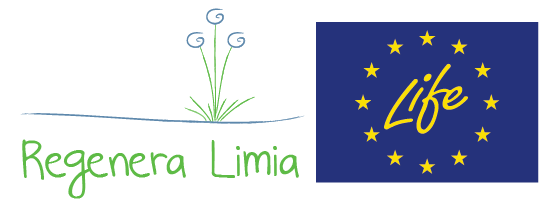Issues
[cmsms_row data_width=”boxed” data_color=”default” data_padding_top=”50″ data_padding_bottom=”50″][cmsms_column data_width=”1/3″][cmsms_gallery layout=”hover” animation_delay=”0″]3653|http://regeneralimia.org/wp-content/uploads/2015/01/IMG_0173-200×200.jpg,3655|http://regeneralimia.org/wp-content/uploads/2015/01/IMG_0175-200×200.jpg,3643|http://regeneralimia.org/wp-content/uploads/2015/01/IMG_0157-200×200.jpg,3634|http://regeneralimia.org/wp-content/uploads/2015/01/IMG_0148-200×200.jpg,3588|http://regeneralimia.org/wp-content/uploads/2015/01/IMG_0085-200×200.jpg,3604|http://regeneralimia.org/wp-content/uploads/2015/01/IMG_0104-200×200.jpg[/cmsms_gallery][/cmsms_column][cmsms_column data_width=”2/3″][cmsms_text animation=”fadeIn” animation_delay=”0″]
Through the REGENERATE LIMIA LIFE project several solutions will be implemented for demonstration purposes in the region of A Limia, focused directly on the environmental problem of the deterioration of water bodies in the basin of the Limia river as a result of excess nutrients.
The Limia region has a strong rural character. In this region agriculture and husbandry activity weighs heavily in the economy of the area and the configuration of its landscape and space. These primary activities related to agriculture and husbandry have been identified as one of the main factors responsible for changing the status of the water bodies of the Limia basin, based on the studies and monitoring of the evolution of the water body of the basin performed by the Miño-Sil Hydrographic Confederation. The effect is notable on the stretch of As Conchas reservoir (a section of the Limia river downstream of the region) where episodes of intense growth of cyanobacteria and eutrophication occur. These processes arise when the water receives large quantities of nitrogenous and phosphorus compounds predominantly from agricultural and husbandry activity and from urban waste, either through diffuse sources or direct discharge. The causal link between agricultural activities and their impact on the aquatic environment comes as a result of the application of organic and chemical fertilizers that cause diffuse surface and groundwater pollution in the water, as well as a significant reduction or even elimination of the riparian forest, with consequent damage to river ecosystems.
[/cmsms_text][cmsms_text animation=”bounceIn” animation_delay=”2000″]
Depurate to recover
[/cmsms_text][/cmsms_column][/cmsms_row]
